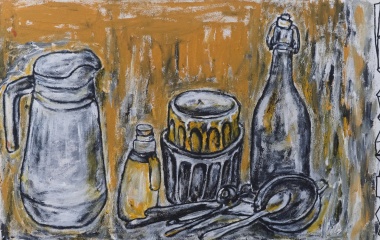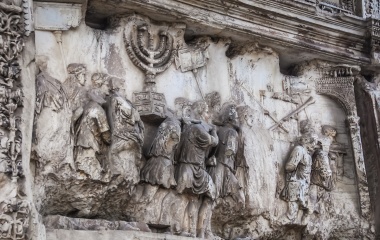
The Rambam, in discussing the prohibition of ba’al toseef (Devarim 4:2), the prohibition of adding to the Torah rules, said that one violates this Biblical law by claiming a rabbinic law is biblical in origin (Mamrim 2:9). The Torah gives the Sages the right and obligation to ensure the relevance of Torah to each generation by making “amendments”; gezerot, protective fences; takanot, social legislation; and rabbinic mitzvot such as the obligation to light candles on Shabbat (and Chanukah).
Yet one must distinguish between that which is biblical and divine, and that which is rabbinic and human. Torah laws are more important and must be treated as such[1]. One of the basic principles flowing from this idea relates to a situation when one is in doubt regarding the permissibility of an action: if the issue involves biblical law, we are to be strict; but lenient if the issue before us is of rabbinic origin. As with all generalizations, there are exceptions.
The opening Mishna of Masechet Beitza groups together three laws relating to Yom Tov where Beit Shammai is lenient and Beit Hillel strict[2]. The first involves the famous egg laid on Yom Tov where Beit Shammai allows one to eat it on Yom Tov itself and Bet Hillel forbids it, only allowing its consumption after Yom Tov. In analyzing this debate, the Talmud is at a loss to explain what type of chicken we are dealing with. If it is one set aside for eating, there should be no reason for Beit Hillel to forbid it; the egg should just be seen as a piece of the chicken. But if it is a chicken being raised to produce eggs, then why is Beit Shammai lenient? Such an egg would be forbidden to use due to the principle of nolad, a subcategory of muktza, which prohibits one to benefit from items that came into existence on Shabbat or Yom Tov.
The Gemara explains that the debate between Beit Hillel and Beit Shammai echoes an earlier debate between Rav Yehuda, who upholds the laws of muktza,[3] and Rav Shimon who rejects the need for such. Beit Shammai, the Gemara claims, follows the lenient view of Rav Shimon, with Beit Hillel following the stricter view of Rav Yehuda. While neither Rav Yehuda nor Rav Shimon distinguish between Shabbat and Yom Tov, Rebbe Yehudah Hanassi, in editing the Mishna, introduces such a distinction, ruling that the laws of muktza apply on Yom Tov, but not on Shabbat.
The Gemara explains that Shabbat is taken very seriously and thus, we can afford to be lenient in one area and not worry that people will take unwarranted leniencies elsewhere. However, Yom Tov is taken lightly by many, and if you allow for a leniency in one area, “people will come to belittle it” (Beitza 2b) and be lenient elsewhere. Ironically, it is the greater importance and seriousness of Shabbat that allows for leniency.
This concept also applies to rabbinic law. As we discussed in Masechet Sukkah, the rabbis arranged our calendar in such a way that Hoshanna Rabba can never fall on Shabbat, whereas Rosh Hashnah and Sukkot can. This means that we may forfeit the biblical commands of shofar blowing and lulav, but never the “custom” of taking the arava. We need not fear that anyone will stop coming to shul to hear the shofar it we miss it one year, but we do need to fear the custom of arava will be neglected if missed in any given year.
It is this fear of possibly belittling mitzvoth that lay behind many of the practices of the second day of Yom Tov. Since at least Talmudic times, many have protested this second day—which according to the simple reading of the Gemara (Beitza 4b) is “only” a custom. As such, no brachot, i.e., neither kiddush nor candlelighting, should be said on this day. Yet had we done such, we can be certain no one would be keeping the second day of Yom Tov today. Rebbe Yehuda Hanassi, in editing the Mishna, did not necessarily aim to be consistent; he was sensitive to the impact of the rulings he choose to codify.
Another aspect of Rebbe’s editing technique is discussed just a few lines later. Once we have established that we are talking about a chicken being raised to produce eggs, the Gemara wonders why the Mishna discusses the egg; the same dispute would apply to the chicken itself. Since one did not initially intend to eat the chicken, it would be muktza, and one could not change one’s mind and decide to eat it.
The Gemara explains that we prefer to discuss the egg itself to point out that Beit Shammai not only allows one to eat the chicken but also the egg, as koach d’hetera adif, the power to be lenient is better[4]. As Rashi explains, “it is good to hear the conviction of one who is lenient, as he relies on his understanding and is not afraid to allow, but the strength of those who forbid is no proof because anyone can prohibit, even that which is permissible”.
It takes great wisdom, courage, and understanding to properly apply Jewish law. We must use our power to search for leniencies, while at the same time guiding the public to uphold the law.
[1] Even within Biblical law, there are varying levels of importance; for example, something written explicitly in the text is of greater significance than something derived from one of the 13 hermeneutical rules.
[2] The Mishna in Eduyot (Chapters 4 and 5) lists the 41 cases where Beit Shammai is lenient and Beit Hillel strict. That sounds like a fair bit, until one realizes that there are 316 debates between these two great schools, and in the remainder of the cases, it is Beit Hillel who is lenient.
[3] While to us, the laws of muktza are so fundamental to Shabbat, they were not universally agreed upon.
[4] The Gemara, on technical grounds having nothing to do with the principles described above, rejects this understanding of the Mishna and explains that in reality, we are talking about a chicken being raised for eating.



